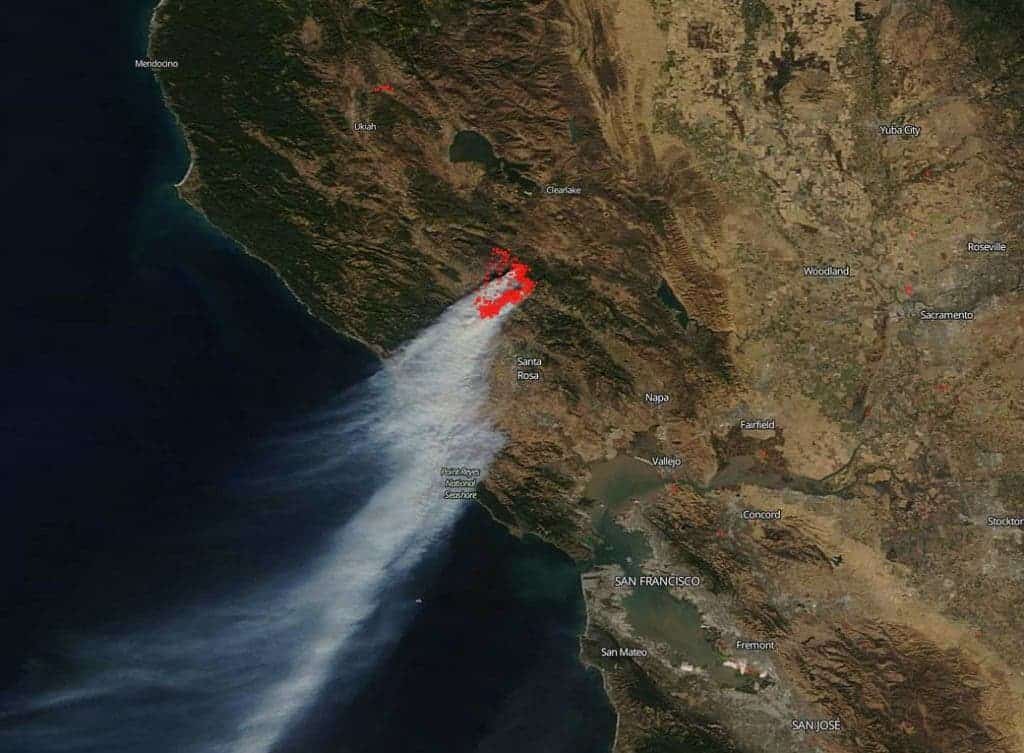As disasters fueled by climate change are set to become more and more common, the reactions of politicians to this type of situation are crucial. The US President appears to see this as a political feud more than an environmental crisis.
California is the most populated and affluent state in the US, but it is not without its share of problems — especially environmental problems. Two of California’s biggest issues (drought and wildfire) are set to be exacerbated by the ongoing climate heating.
Climate change brings longer, hotter, and drier fire seasons. It reduces snowmelt and accentuates droughts — all of which can affect the size and scale of wildfires (not just in California). It’s hard to draw a line between every fire and climate change, but overall, there is substantial evidence that the two are connected. This is not something that will affect us somewhere down the line; it’s happening right now.

Overall, 6,190 fires have been recorded according to Cal Fire and the US Forest Service, totaling an estimated of 198,815 acres (80,458 ha) acres of burned land as of last week (October 27). Without a doubt, the numbers have grown substantially since then, although official estimates are not yet out. People are experiencing historic (potentially unprecedented) blackouts and evacuations, and the crisis is still unfolding.
The fires have spread so quickly that California Gov. Gavin Newsom declared a statewide emergency last week, in an attempt to mobilize all available resources to fight the blaze. However, this drew a reply from President Trump, who has made several statements at odds with reality.
Trump failed to express sympathy for Californians. He also did not make any efforts to mobilize additional resources to deal with the wildfires. Instead, he took a jab at the state governor, blaming his forest management approach for the disaster.
However, here’s the thing: the vast majority of these fires were not forest fires. The vast majority of the fires were on were grasslands and chaparral, — far away from any forested areas. Furthermore, Newsom has continued and expanded the work of the previous governor Jerry Brown, launching a $1 billion program over 5 years to clean out some of the dry wood and bush in the forests, reducing wildfire fuel. California has increased forest fire prevention strategies, whereas the federal government has slashed its funding in these areas (something particularly worrying as 57 percent of about 33 million acres of forest in the state is managed by federal agencies).
California’s pace and investment in reducing forest fires in unprecedented, but these simply aren’t fires that forest management can prevent. Nevertheless, Trump seems determined to cut federal funding from California’s forest management projects. He tweeted this one year ago:
This is more than just a misstep from the US President. When it comes to forest management, Trump has a history of taking positions that are not rooted in reality. Last year, he praised Finland’s president for his forest management practices, saying that they “rake forest floors“.
“I was with the president of Finland and he said: ‘We have, much different, we are a forest nation.’ He called it a forest nation. And they spend a lot of time on raking and cleaning and doing things, and they don’t have any problem.”
The president of Finland, one of Europe’s coldest and wettest countries, says that he doesn’t know what Trump is referring to and explained that they don’t rake forest floors.
Trump also attacked California’s water management policies, essentially saying that they are too eco-friendly.
“Also, open up the ridiculously closed water lanes coming down from the North,” he wrote. “Don’t pour it out into the Pacific Ocean. Should be done immediately. California desperately needs water, and you can have it now!”
He is referring to the state policy of ensuring sustainable water flow into the San Joaquin and Sacramento River delta to support salmon and other at-risk species. However, because of the intense winters experienced by California, the state actually has access to more water than usual and in this case, water availability is really not the problem. Stating that a governor is “in the pocket of environmentalists” and chastizing environmental legislation is only adding insult to injury.
Unfortunately, the way this situation is unfolding seems representative of a bigger trend: politicians don’t often take environmental threats as serious as they should. Capitalizing on disasters for political gain is not the way forward. As climate change kicks into gear, forest fires such as these will only become more and more common, and they will become more and more dangerous. Even if you don’t care about the environment at all, taking proactive measurements makes economic sense: so far, this year’s California firest have cost $163 million in suppression alone, plus other damages.
In California’s forest fires there is a dire reminder that this is the state of affairs now. This is the new norm with which we will have to deal, and climate change doesn’t recognize any borders. Whether or not you live in California, you will have to deal with its consequences — and you will depend on politicians’ responses.
Lastly, Trump’s attitude towards California also stands in stark contrast to his attitude towards Russian President Vladimir Putin. While the White House has issued no official statement on the California fires and has shown no sympathy towards people affected by this tragedy, just three months ago, President Trump told Putin that the U.S. stood ready to send aid to Russia to fight massive wildfires in Siberia. This type of collaboration is crucial to overcoming environmental disasters in a heating world — but we also should never overlook national collaboration, even if it does mean crossing political borders.


